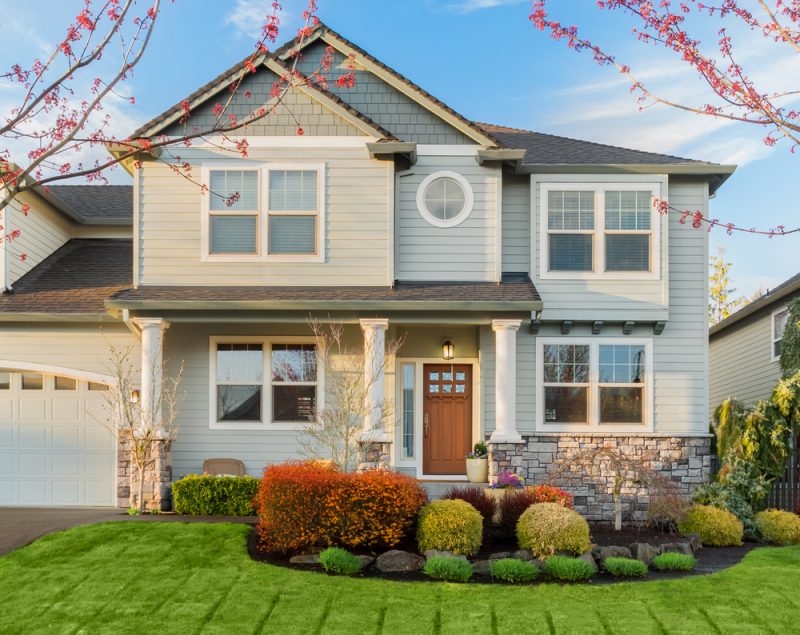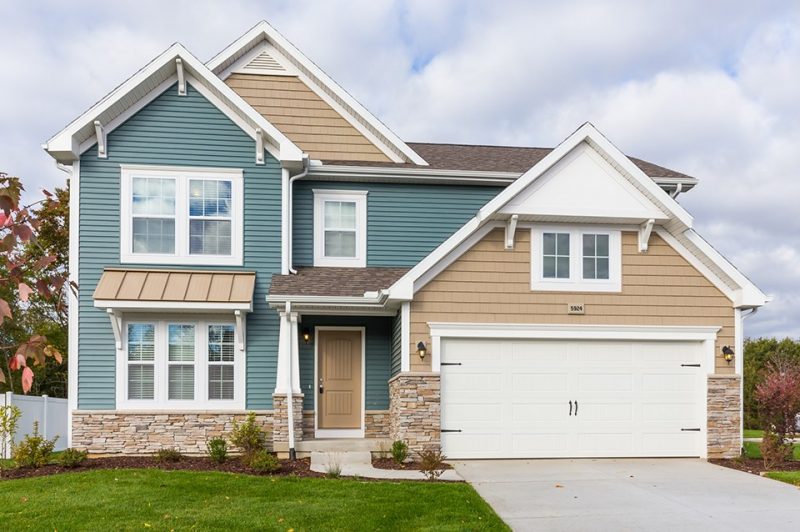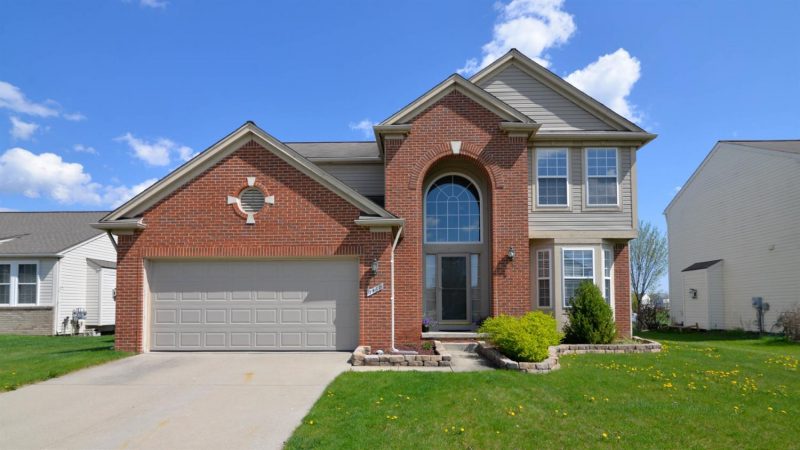Is it better to buy new construction or an existing home?

Build new construction or buy existing? Consider the costs and benefits of each.
What are the costs and benefits of new construction vs. an existing home, and how do I compare these options? Read on, and we will show you how to sort this out.
Home buyers often stop at just the cost of buying the home – the purchase price – not considering some hidden monthly costs that drive up your monthly outlay. After consideration, you may find that purchasing a higher-priced new construction home is a cheaper option monthly than an existing 10-20-year-old home, and it may provide you and your family with a better quality of life.
New construction homes are likely more energy efficient, less maintenance, and cleaner! You can select and configure your floor plans to meet your needs and desires with features such as extended or 3-car garages, expanded master suites, luxury baths, dressing areas, 9 ft. or higher ceilings, lot selection that offers the right view and orientation, and much more.
Existing homes are generally priced lower for similar square footage, with landscaping, window treatments, and detailing already in place. They are available in 30-90 days vs. the 9 – 12 month delivery time frame for a new home! They also tend to be in higher tax districts, and in the current seller’s market, there are often insufficient selections, and landing one can be competitive and frustrating.
Before buying any home, it is essential to review the total costs of homeownership carefully, your plans wants, and needs, and consider all the significant components of your monthly outlay. If you are interested in exploring this or any aspect of purchasing a home more thoroughly, let’s schedule a no-obligation home-buying discovery meeting today.
The Cost of Money – purchasing power
Presently The 30-year fixed mortgage rate currently stands at around 4.77%. For reference, that’s nearly a seven-year high and almost 1% higher than just a year ago. For purposes of our discussion, we will use a mortgage rate of 5 percent, assuming that rising interest rates are a trend that will continue.
We will make these assumptions about the cost of money and purchasing power: for each $1,000 increase in the purchase price, the monthly payment increases by $5.37, and for each $100 in monthly expense, you can purchase $18,622 more house. Let’s round these off for discussion:
- For each $1,000 increase in the purchase price, the monthly payment increases by $5.00/mo.
- For each $100 in monthly expense, you can purchase $20,000 more house.
Example homes for comparison
We will compare an existing 2000-square-foot home with a purchase price of $265,000 and a new construction home priced at $310,000 in the Ypsilanti Township area. This is a typical price point in this area for well-qualified first-time or move-up buyers.
Example New Construction Home:
- Model: Allen Edwin Elements 2078
- square feet: 2078
- Year built: 2018
- Neighborhood: Belle Meade, Augusta Township.
- Price: $310,000.
- Age – NEW.

Allen Edwin Elements 2070 new construction home.
Example Existing Home:
- Model: Pulte, St. James
- Square Feet: 2,000 square feet
- Year built: 2000
- Neighborhood: Green Farms, Ypsilanti Township.
- Price: $265,000.
- Age -18 years.

Pulte St. James model home in Green Farms, Ypsilanti Township, MI. Built 2001.
Now let’s look at the pluses and minuses of each option. We will consider these categories:
- Monthly payment – principal and interest based on the purchase price with 10% down at 5 percent interest over 30 years comparing new construction to similar existing homes.
- Monthly energy costs – based on an efficiency estimate of average homes built to new standards vs. homes built in 2004.
- Monthly property tax costs – the ramifications of different property tax rates in municipalities on your monthly tax bill.
- Monthly repair and maintenance costs – costs or reverse needed over the course of 7 years, the average time people stay in a home.
- Lifestyle considerations – Intangibles of buying and owning a new home vs an existing home.
|
Comparing the buying power of a new construction home vs. a used home |
|||||
| Principal and Interest 10% Down | Energy Costs | Tax Considerations | Repair and Maintenance (7 yrs) | Total | |
| NEW-Allen Edwin home $310,000 | $1500/month | 1919 annually or $160/month | Augusta Twp. $4,800/yr $400/month | 10,000 – new home set up costs over 7 yrs | |
| USED-Pulte hom $265,000 | $1280/month | $3366 annually or $281/month | Ypsilanti Twp. $6,000/yr
$500/month |
24,000 – est. r and r costs over 7 yrs | |
| Monthly payment difference | ($220/mo) | $121/mo | $100/mo | 14,000/(7*12)= $167/month | 220-121-100-167=168 /month |
| Buying power | ($45,000) | $22,455 | $20,000 | $14,000 | $8,525 |
Monthly Payment
An existing 2000 square foot, Pulte St. James model home in Greene Farms in Ypsilanti Township is selling for around $265,000 with principal and interest of $1,280 per month. A new Allen Edwin Home in Belle Meade in August Township is selling for around $310,000 with principal and interest of $1,500 per month. A difference of $220 per month or buying power of $45,000.
Energy costs
When considering new homes vs. a used or existing home, be sure to factor in the monthly savings in energy costs. New homes are built to meet current building codes and are about twice as energy efficient as the average existing home, and they are getting more efficient each year!
Home builders use differing evaluation systems to determine energy efficiency. Generally, minimum standards set by the building code for new construction are substantially higher than 20 years ago, and homes built in the early 2000s are substantially more energy efficient than homes built in the 1970s and 1980s.
Allen Edwin Homes uses The Residential Energy Services Network’s (RESNET) Home Energy Rating System (HERS) Index for inspecting and calculating a home’s energy performance. Homes are rated for energy efficiency and issued with a HERS Index Score based on their energy performance. The rated home is compared to the HERS Reference Home to determine its energy efficiency. The HERS Reference Home is modeled on an energy-efficient home that conforms to the 2004/2006 International Energy Conservation Code (IECC) and has a HERS Index Score of 100. The lower a home’s HERS Index Score, the more energy efficient it is.
So our example existing home, built in 2000, would be close to the reference score of 100. Edwin Allen Homes, which tests every home they build and publishes its HERS index score, publishes a HERS score of 57 for this new home. The Allen Edwin Elements 2070 home has a projected annual energy cost of Elements 2070 57 = $1919. The Pulte St. James has a projected energy cost of 100 = $3366, a difference of $1,447 or $ 121 per month. Buying power = $22,455
Today’s homes are about twice as energy efficient as the average existing home and getting more efficient each year! That can amount to tens of thousands of dollars in savings over the time you own your next home – not to mention a cleaner environment.
Tax considerations
Tax rate differences between municipalities can substantially affect your buying power. Tax millage rates for a homesteaded property in the Washtenaw County area vary from a low 25 mils in Salem Township to more than 65 mils in Ypsilanti City. In the case of our two example homes, Ypsilanti Township has a millage rate of 46 mils vs. August Township, with a rate of 32 mils. Taxes for a Ypsi Township home with an estimated SEV (state equalized value) of $130,000 would be @ $6,000 per year, while taxes on the new home with a SEV of $150,000 would be @ $4,800 per year – a difference of $100 per month or buying power of an additional $20,000 in the purchase price. So, simply by buying in a lower-tax rate community, you can increase your buying power significantly.
Maintenance and repair costs
Home buyers often underestimate and under budget for home maintenance and repair costs. These costs, if not adequately considered when determining the affordability of a home, could result in an inability to afford the upkeep of the home and result in deferred maintenance, stress and disappointment, and overall less enjoyment of the property.
A budget of 1 percent per year of the purchase price is a good rule of thumb when considering existing homes in the 10-20-year-old age group. New homes will require some setup costs but should require little maintenance and repair costs for the first 7-10 years. The repairs that you will most likely be considered in an existing 10-20-year-old home are roof replacement, flooring – carpet for sure, paint inside and out, furnace and air conditioner, and maintenance of decks, patios, and concrete. New construction homes often require at least 10,000 for landscaping, appliances, shelving, and window treatments to get the home “up to speed.”
The table below shows a breakdown of probable expenses:
| Maintenance and Repair Costs: (New vs. Used Home) | ||
| New Construction Home | 10-20-year-old Used Home (with original components) | |
| New home setup- landscaping, decorating | $5,000 $10,000 | 0 |
| Roof – replace after 10-20 years | $0 | $5000 to $15,000 |
| Appliances – replace after 10 years | $0 | $2,000 to $8,000 |
| Paint – every 5-10 years | 0 | $1,000 – $10,000 |
| Heating & Cooling System – replace after 15-20 years | $0 | $5,000 to $15,000 |
| Flooring – replace after 10 years | $0 | $3,000 to $12,00 |
| Water Heater – replace after 10-15 years | $0 | $1,000 to $2,000 |
| Total | $10,000 | $17,000 to $62,000 |
Lifestyle factors
What is the value of your time – Do you know how much time it takes to maintain an older home vs. a new home? 10 – 50 hours per year? Cleaning, painting, caulking, repairing? The honey-do list is likely to be short with a new construction home. And while your new home is under warranty, it’s actually a “builder-do” list! What is the value of your time? You may enjoy doing yard work, but would you rather be doing something else?
Floor plans and livability – Higher ceilings, more windows, better layouts, larger garages, more efficient mechanicals and better insulation, more closet spaces, luxury baths, Builders do a lot of market research, and they nail it when it comes to meeting the needs of consumers
Is your home designed around how your family lives today? Buying a new home will allow you better to fit your floor plan to your family’s needs.
Purchase process – one of the most significant issues facing our housing market today is the lack of inventory! Buyers are tired of shopping for homes and experiencing a lack of selection and overly competitive bidding. Many buyers are waiting on the sidelines for these reasons. New construction, while requiring a longer wait, eliminates these problems and can be a much more pleasant purchase experience.
Dirt and Germs – Simply put, when you buy someone else’s house, you purchase their dirt and germs – especially if there were pets in the house. Don’t think about it! Plan on replacing the carpet, painting, and cleaning ductwork if you really want a super clean house.
Conclusion:
You will pay more for similar square footage in a new construction home; however, consider the benefits – Time, Money, Tax Savings, Resale Value, Energy Savings, and Environmental benefits. There is a lot of value in a new construction home that you may not be able to find in an older, used home.
Don’t just look at the price tag of the homes you are considering. Consider the total cost of ownership and what that looks like on a monthly basis – because that is how you will pay for the home. Consider the hidden value. In our example here, the monthly cost of a new construction home, $45,000 higher, actually comes out to be cheaper on a monthly basis and may provide more enjoyment and a higher quality of life for your family.
If you are interested in exploring purchasing a new home vs an existing home or any aspect of purchasing a home, let’s schedule a no-obligation home-buying discovery meeting today.










